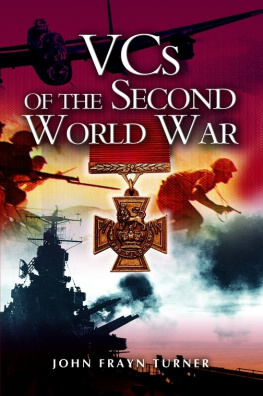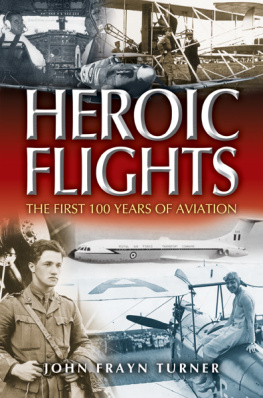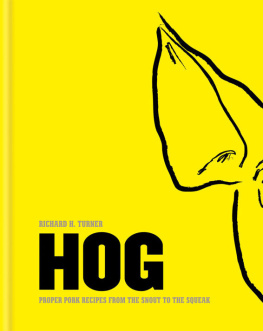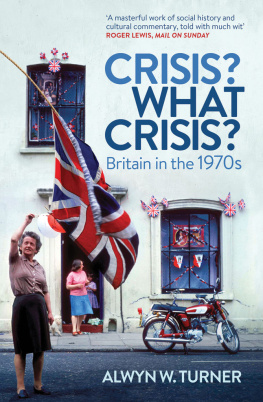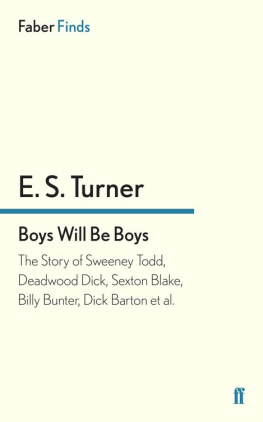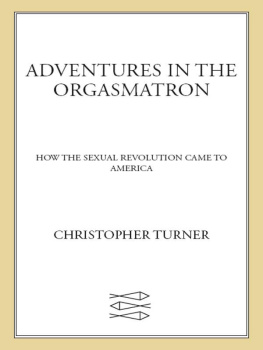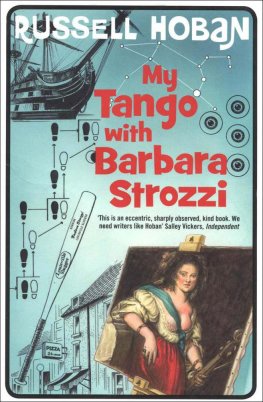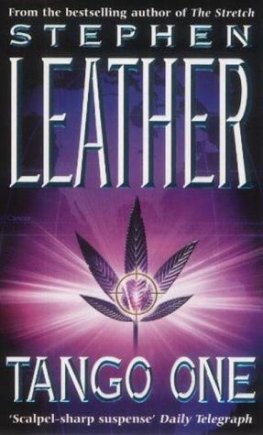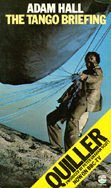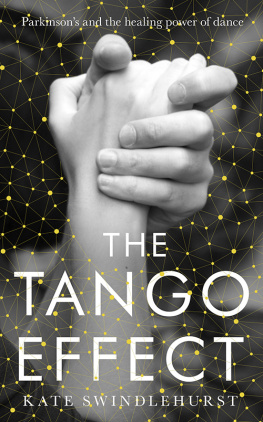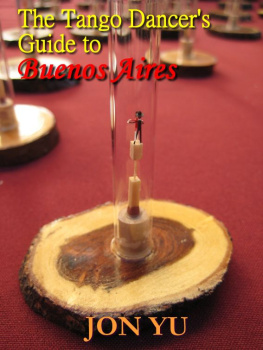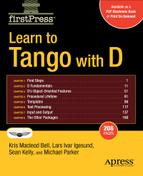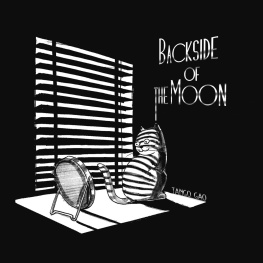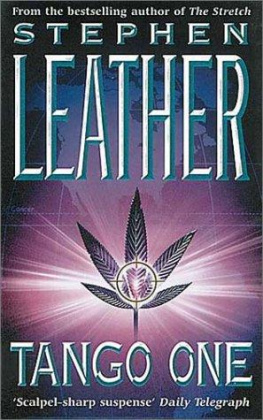The right of DAVID TURNER to be identified as Author of this work has been asserted by him in accordance with the Copyright, Designs and Patents Act 1988
All rights reserved.
No reproduction, copy or transmission of this publication may be made without written permission.
No paragraph of this publication may be reproduced, copied or transmitted save with the written permission or in accordance with the provisions of the copyright Act 1956 (as amended).
Any person who does any unauthorized act in relation to this publication may be liable to criminal prosecution and civil claims for damage.
Acknowledgements
I am grateful for the generous help and encouragement given to me during the writing of this book by several people:
Rodolfo Aguerrodi
Joaquin Amenbar
Tony Arihanto
Christine Denniston
Stephanie Ggelein
John Hounam
Alex Krebs
Tony Lucas
Diana Mansfield
Chan Park
Wendy Rainbow
also
numerous fellow pupils on the Cambridge tango scene and in particular in memory of Isabelle Bouhon.
My special thanks go to Mike Rose, who has spent many, many hours vetting the contents, and making suggestions and technical corrections. His support, wisdom, extensive knowledge of the subject and enthusiastic comradeship have been invaluable to me.
The Illustrations
Chapter heading photographs, along with many others throughout the book are the work of Diana Mansfeld, a tanguera and freelance photographer.
The text illustrations were taken by David Turner with the invaluable help of Tony Arihanto. Most of them were shot at an idyllic weekend tango workshop at Bylaugh Hall, Norfolk.
Prologo
En un prologo, se puede hablar de muchas cosas diferentes, y se pueden escribir muchas palabras, sentencias y parrafos, con o sin sentido. Como en nuestras vidas, ya que normalmente hacemos o experimentamos cosas con o sin sentido; cosas como una pasin, una addiccin, conocer gente, relaciones, y algun ticket para viajar, quien sabe a donde.
El tango, como la vida, es es un viaje e incluye muchas cosas. Como la vida, el tango es un viaje de ida, sin regreso, pero tiene algo bueno, uno puede parar y bajarse en cualquier momento, aunque una vez que lo prueban, la mayoria de la gente sigue en el todo la vida.
La vida esta llena de cosas maravillosas, y nos permite elegir diferentes cosas en cada momento. Como un viaje, durante nuestras vidas en este mundo nosotros hacemos muchas y diferentes elecciones para continuar nuestro viaje en diferentes direcciones o para alcanzar diferentes objectivos exactamente . Lo mismo ocurre con el tango.
Este libro habla acerca un viaje; el viaje de un tango adicto. Este libro esta escrito con la pasin de vivir, antes y despues de descubrir el tango. Este libro nace en la necesidad de una persona de contarle al mundo lo que ha encontrado. Este libro habla acerca de tango, de mi mismo y habla mucho ms de acerca de el (David)
Realmente, me siento muy honrado por ser parte del viaje David en el tango.
Rodolfo el Chino Aguerrodi
Buenos Aires July 2003
Prologue
In any prologue to a book we can talk about a lot of different things. Similarly, we can write lots of words, sentences and paragraphs, some with and some without apparent sense. This mirrors real life, where many things we do and experience either have, or do not have, much sense; things such as passion, addictions, people, relationships. Some of us seem to have tickets to ride; but who knows where?
Tango is like life itself. It is a journey that encompasses many aspects. Life, like tango, is a one-way trip; theres no return ticket. But you can get off at any station you like, although many people stay on their single tango journey until the entire voyage of their lives is complete
Like any journey, life is full of many choices at every moment. During our lives on this earth we make many choices; we travel in different directions to achieve different goals. The same is true of tango.
This book describes a journey by one tango addict who has lived his life with passion, both before and since discovering tango. This book was born from the necessity a person has to tell others about what he has found. This book is about tango, to some extent about me, Rodolfo, and a lot about David.
I feel honoured to have been a part of Davids tango journey.
Rodolfo el Chino Aguerrodi
Buenos Aires July 2003
Introduction to the first edition
Argentine tango is an absorbing, addictive and unique way of dancing. I love it! It is an entire body language in which two people communicate a wide variety of emotions to one another. These feelings are usually driven by the music, though tango is perhaps the only dance that is enjoyable even when danced in total silence. Indeed, I have been most moved when watching a couple dancing in a silent room, completely engrossed in each other and the dance
Please, please do not confuse Argentine tango with ballroom tango with its image of exotic dress, unnatural arm posture and bizarre, sharp head and neck movements. These elements, I believe, stand in the way of the newcomer to tango who may think of tango as showing off and become overly concerned about performance. Tango, for me, is not a performance as such though it can be wonderful to watch. Tango is a conversation in body language between two people. How it looks to an observer is not half as important as how it feels. It may be the case that when it feels good, it looks good too.
Some have likened tango to a seduction; for some couples it will be. For some it may be a harmless firtation with gentle teasing and for others it is a complex game of body chess. It does take two to tango but each few minutes of dance are what you choose to make them.
Each dance is totally improvised by the leader ( not necessarily a man) who takes the follower ( not necessarily a woman) for a trip. The trip lasts for the duration of a song and will never be identical. The same leader will dance an entirely different dance any other time, even on an empty dance floor to the same tune; he invents the dance as he is moved by the moment and the music.
This may be the reason for the addictive properties of tango. However many times you attempt to reproduce the same conditions, it will always be a fresh experience because your mood, or that of your partner, will differ. Of course, on a crowded dance foor, the problems of navigation will throw yet another spanner in the works. As you become more skilled, your repertoire of possible choices of moves increases. In short, tango offers a huge and ever-changing kaleidoscope of dance possibilities and is always challenging and rewarding. It can never be boring.
This book has several aims. I am most eager to show beginners how fulflling such a dance can be and encourage them to try it this way. I hope that, at the same time, experienced tangueros will be able to use some of the ideas and exercises to enjoy their dancing all the more. Between these two extremes, I like the image of such a book taking the place of a rough guide but with a smiley face. Perhaps the closest I can hope for is that, in passing on what I have learned, I can be like the useful older brother, a couple of years up the school ladder. You know, someone who is approachable for help but not so far advanced that he cant remember how it felt to struggle? I hope my book is helpful at all levels.


